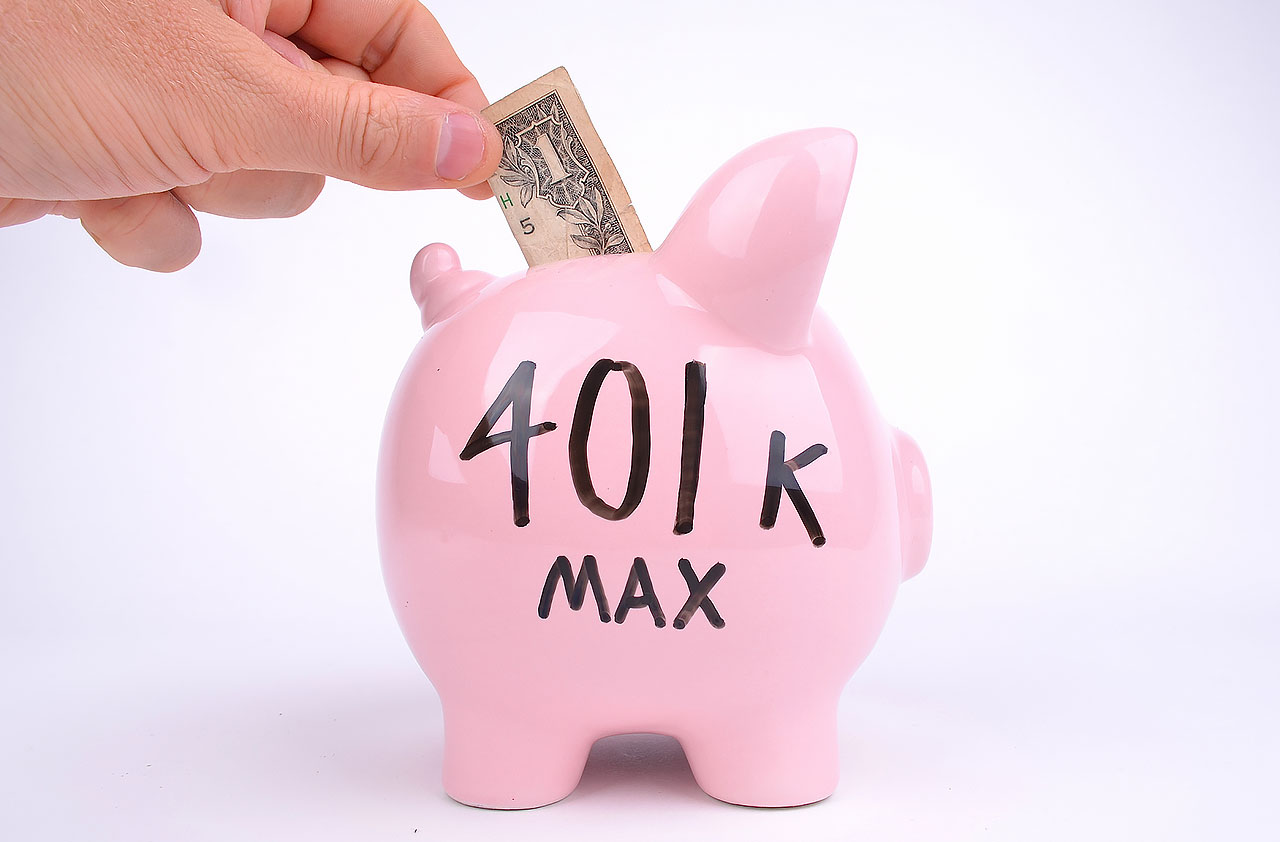Four Ways to Maximize Your 401(k) Contributions Before the Year Ends
To maximize your 410(k) contributions in 2024, assess how much you’ve contributed so far, check your employer’s match, take a look at your budget and consider increasing how much you set aside per paycheck.


The truth is, 2024 is wrapping up with 2025 in close pursuit. With the holidays taking up much of your time, you may not be concentrating on retirement moves to make before 2025. But if you’re the type of person who does everything to the max, investing in your future retirement now could be a game changer. And, if all goes well, 2025 could be a bumper year for your 401(k).
Look at these 4 ways to take your 410(k) contributions to the max before 2025 arrives.
How much to max out my 401(k) in 2024?
In 2024, you can invest up to $23,000 into your 401(k) retirement plan as per IRS contribution limits. If you’re over 50 and need to play catch-up, you can invest an extra $7,500. That means your total possible contribution for 2024 is $30,500. If that seems like a lot, it is. But you don’t have to max out your contributions if you can’t afford it. That’s where employer matching can help.

Sign up for Kiplinger’s Free E-Newsletters
Profit and prosper with the best of expert advice on investing, taxes, retirement, personal finance and more - straight to your e-mail.
Profit and prosper with the best of expert advice - straight to your e-mail.
Contribution limits for 2025
Some good news in 2025: you can invest $23,500 into your retirement savings plan, bringing your possible contribution up to $31,500. If you're over 50, the catch-up contribution remains at $7,500 for 2025. But (and this is huge) is a change made in SECURE 2.0 for employees aged 60, 61, 62 and 63 who participate in workplace retirement plans. Starting in 2025, this super catch-up contribution limit is $11,250 instead of $7,500.
Until then, check out these 4 ways to max out your 401(k) contributions before year’s end.
1. Figure out how much you’ve contributed in 2024
If you’ve contributed as much as possible for the year, you’re in good shape going into 2025. But, if you’re not sure, you skipped a few months, changed jobs or otherwise haven’t contributed consistently in 2024, you still have time to make adjustments to max out your 401(k) contributions for the year.
2. Check on your employer's match
Employer matching is a job benefit not to be overlooked heading into 2025. After all, for every dollar you save in your 401(k), your employer either chooses to match your contributions dollar-for-dollar or offers a partial match up to a certain percentage of your wages. Knowing where you stand today can help you make the most of this opportunity before the end of the year.
For example, let’s say you earn $50,000 per year and contribute $3,000 to your 401(k), or 6% of your salary. If your employer offers to match 50 cents of each dollar you contribute up to 6% of your pay, they would add $1,500 each year to your 401(k) account, boosting your total annual contributions to $4,500.
3. Take a hard look at your budget
Generally speaking, maxing out your 401(k) is always a good move. However, retirement planning can be a balancing act; sometimes, your budget is downright against it. If you have high debt, no money set aside for emergencies, or you haven’t yet started an emergency fund, you may want to hold off a bit.
That doesn’t mean you shouldn’t contribute to your retirement plan at all. Maintaining contributions to your 401(k) is important to your retirement savings plan, even if it means not maxing it out in 2024. Still, if you wait too long to save, you’ll have to play catch-up, but if you save too much, you may have to tap into your account early, which can mean early withdrawal penalties if you are under age 59-½.
4. Increase the amount you contribute per paycheck
If you have enough cash stashed away to cover a large lump sum contribution to your 401(k), you could max out your 401(k) contributions before the end of the year. You can do this by increasing the percentage you contribute monthly from your paycheck. You’ll want to speak with your employer or HR department to see if this is possible and fill out the necessary paperwork. Keep in mind that how often you increase it or even if you can will depend on your plan rules.
While you're at it, you may also want to check to be sure your contributions are still automatic. Since it’s usually easier to save money if it’s automatically deducted from your paycheck, it may be worth reviewing your budget before the end of the year to see if you can up your contribution amount to max out your 401(k). And, if you haven’t set up automatic payroll contributions, now is a good time to do so.
Benefits of maxing out your 401(k)
Maxing out your 401(k) has some clear benefits. This is especially true if you’ve fallen behind on your savings goals or you simply want to grow your retirement nest egg faster. The main advantage is that you’ll have more money saved for retirement. Hint: The 'Magic Number' Needed to Retire Comfortably Is More Than You Think.
According to Northwestern Mutual’s 2024 Planning & Progress Study, most retired Americans believe they will need nearly $1.5 million in the bank to retire comfortably. That’s a 15% increase — which far outpaces the 3% to 5% inflation rate — over 2023 and is up 53% from 2020.
Besides that, the money you put into your 401(k) lowers how much you’ll pay in taxes for the year, which may put you in a lower tax bracket. And, 401(k) investments grow tax-deferred, so you won't pay taxes on the money until you withdraw the funds in retirement.
If you have a Roth 401(k), you don't get a tax break on contributions because you fund your account with after-tax dollars. But the money you contribute grows tax-free and you won’t pay any taxes on your withdrawals in retirement, which means your retirement savings will go even further. For some, the immediate tax benefit is as appealing as the benefit of future savings.
Speak with a pro
Maxing out your 410(k) each year may not be enough to retire comfortably, but it is a great start. That’s why enlisting the help of a financial advisor in 2024 can help you get a head start on 2025 and a happy retirement down the road.
Related Content
Get Kiplinger Today newsletter — free
Profit and prosper with the best of Kiplinger's advice on investing, taxes, retirement, personal finance and much more. Delivered daily. Enter your email in the box and click Sign Me Up.

For the past 18+ years, Kathryn has highlighted the humanity in personal finance by shaping stories that identify the opportunities and obstacles in managing a person's finances. All the same, she’ll jump on other equally important topics if needed. Kathryn graduated with a degree in Journalism and lives in Duluth, Minnesota. She joined Kiplinger in 2023 as a contributor.
-
 Before You Invest Like a Politician, Consider This Dilemma
Before You Invest Like a Politician, Consider This DilemmaAs apps that track congressional stock trading become more popular, investors need to take into consideration some caveats.
By Ryan K. Snover, Investment Adviser Representative
-
 How to Put Together Your Personal Net Worth Statement
How to Put Together Your Personal Net Worth StatementNow that tax season is over for most of us, it's the perfect time to organize your assets and liabilities to assess your financial wellness.
By Denise McClain, JD, CPA
-
 Before You Invest Like a Politician, Consider This Dilemma
Before You Invest Like a Politician, Consider This DilemmaAs apps that track congressional stock trading become more popular, investors need to take into consideration some caveats.
By Ryan K. Snover, Investment Adviser Representative
-
 How to Put Together Your Personal Net Worth Statement
How to Put Together Your Personal Net Worth StatementNow that tax season is over for most of us, it's the perfect time to organize your assets and liabilities to assess your financial wellness.
By Denise McClain, JD, CPA
-
 I'm 50 and My Home Is Worth $5 Million. Can I Retire Now?
I'm 50 and My Home Is Worth $5 Million. Can I Retire Now?It may be oh-so tempting to cash out your upscale home and leave work for good. But should you? We ask the experts.
By Maurie Backman
-
 Bouncing Back: New Tunes for Millennials Trying to Make It
Bouncing Back: New Tunes for Millennials Trying to Make ItAdele's mournful melodies kick off this generation's financial playlist, but with the right plan, Millennials can finish strong.
By Alvina Lo
-
 Americans Are Retiring Later: Will This Trend Last?
Americans Are Retiring Later: Will This Trend Last?Given a host of pressures to keep working, Americans are retiring later in life. Will regulatory and economic forces encourage you to work longer?
By Christy Bieber
-
 Retiring Without a Partner? How Singles Can Maximize Their Savings
Retiring Without a Partner? How Singles Can Maximize Their SavingsRetirement can be expensive, especially when you do it alone, surveys show. But there are ways to maximize your retirement savings even when facing your second act without a partner.
By Kathryn Pomroy
-
 When Should You Hand Over the Keys — to Your Investments?
When Should You Hand Over the Keys — to Your Investments?The secret to retirement planning? "The best time to hand over the keys is before you’ve realized you need to hand over the keys."
By Maurie Backman
-
 Financial Steps After a Loved One's Alzheimer's Diagnosis
Financial Steps After a Loved One's Alzheimer's DiagnosisIt's important to move fast on legal safeguards, estate planning and more while your loved one still has the capacity to make decisions.
By Thomas C. West, CLU®, ChFC®, AIF®